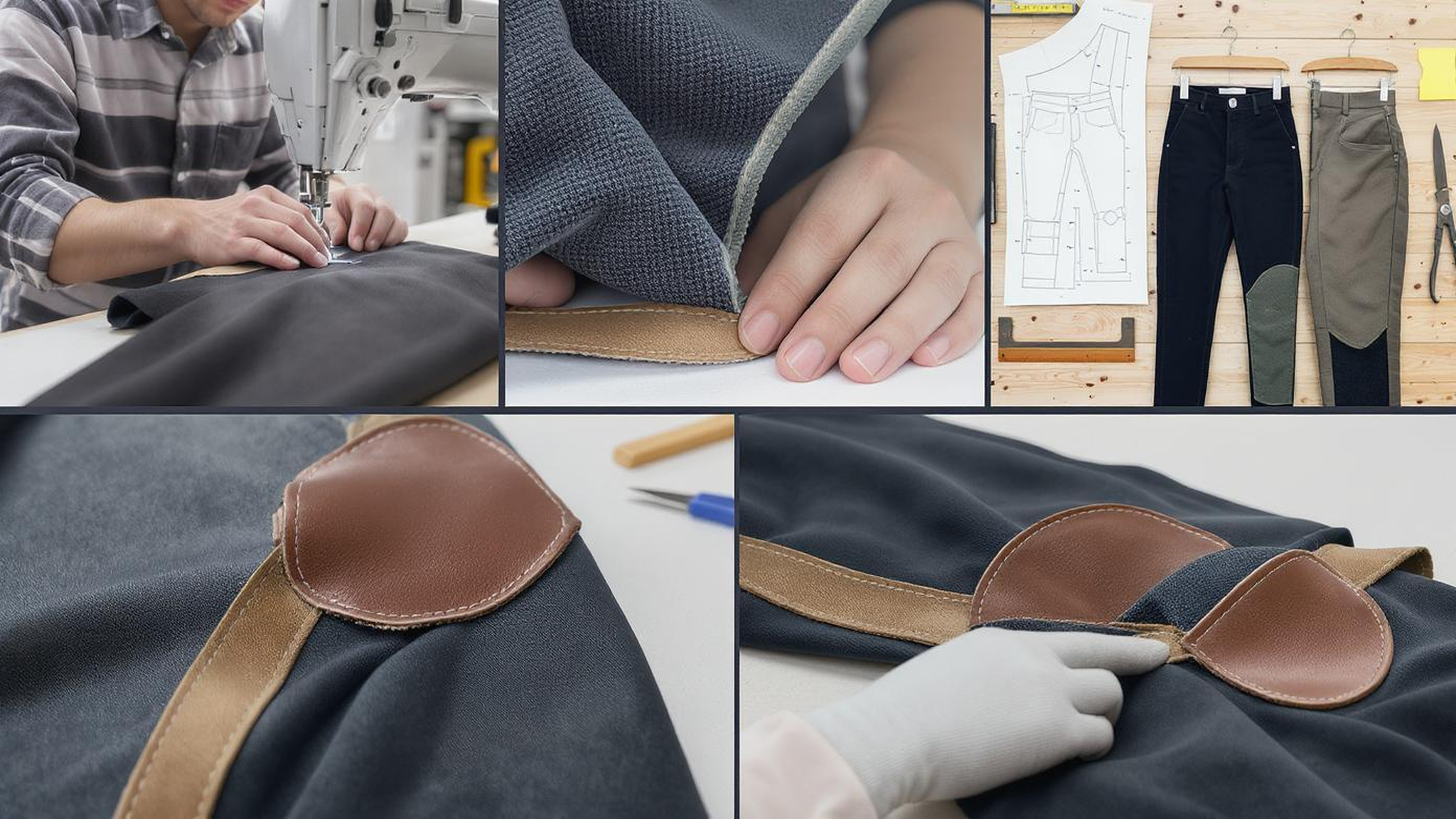You know what drives me up the wall?
Walking into a tack shop and seeing breeches that cost $280 — and knowing they were made with the same fabric as gym leggings, stitched by a factory that also does yoga pants, and designed by someone who’s never sat on a horse for more than ten minutes.
I’m not mad at the brands. I get it. You want to look good. You want performance. You want to feel like you’re investing in quality.
But here’s the truth: most custom riding breeches aren’t custom at all.
They’re “custom” because you picked a color and added a logo. That’s not custom. That’s branding.
Real custom means:
- The pattern fits your body, not a generic size chart.
- The fabric was tested for your climate, your discipline, your sweat.
- The grip was placed where you need it — not where the designer guessed.
- And every stitch was watched, not just assumed.
At Fexwear, we’ve been making breeches for riders, teams, and small brands for over a decade.
We’ve shipped to national teams. We’ve had clients come back after five years saying, “These still fit. How?”
We’ve also had disasters. Batches that failed. Deadlines missed. Clients furious.
And today? I’m finally telling you how it really works.
Not the polished version. The raw one.
With all the mistakes, the shortcuts we refused to take, and the things no one talks about — like why your breeches keep ripping at the crotch (spoiler: it’s not just you).
This isn’t a sales pitch.
It’s a post-show debrief.
Grab a chair. Let’s talk.
“Custom” Doesn’t Mean What You Think It Does
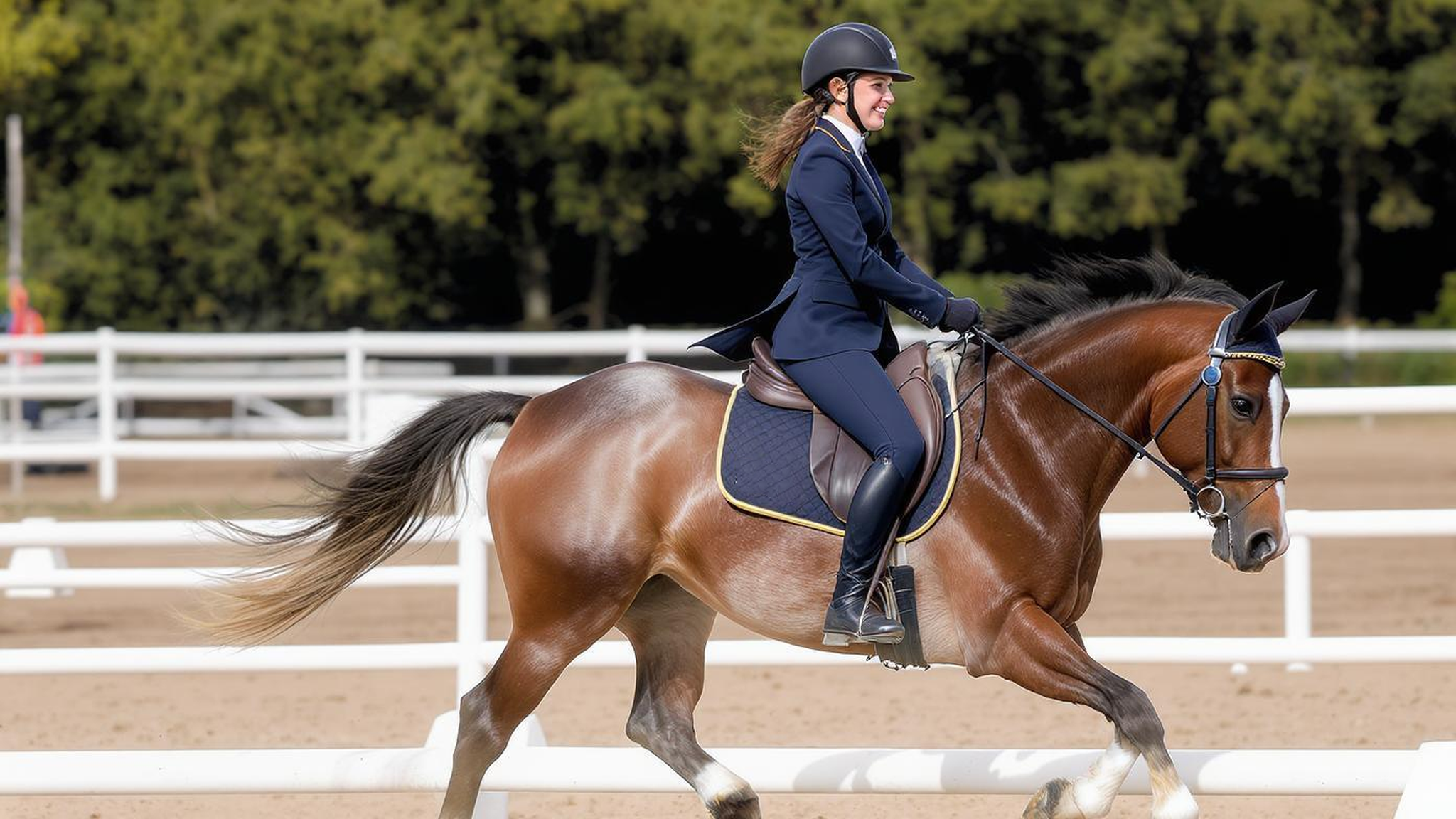
Let’s start with the biggest lie in equestrian apparel: customization.
You go to a brand’s website. You click “Design Your Own.” You pick navy, add your initials, choose a knee patch, and boom — “custom breeches.”
No.
That’s configurable. Not custom.
Real custom means:
- We start from scratch with your measurements — not a size chart.
- We adjust the pattern for your body shape: longer rise, wider thigh, narrower waist.
- We test the fit on you or a mannequin built to your dimensions.
- And we iterate — because the first sample is never perfect.
The Sample That Almost Killed a Client Relationship
I’ll never forget this one.
Client wanted custom breeches for her riding academy. 60 pairs. Deadline: three weeks before a national show.
We took her measurements, built the pattern, sent the first sample.
She called me screaming.
“Too tight in the hip. Can’t bend. Feels like I’m in a sausage casing.”
I flew out to meet her. Watched her daughter try them on. Saw the fabric pull at the inner thigh. Watched the grip shift when she mounted.
We’d used a standard athletic fit base. But her riders were juniors — shorter inseam, wider hips, different posture.
We remade the pattern from scratch. Delayed the shipment by ten days. Cost us $3K in overtime and air freight.
But the second batch? Perfect.
Moral of the story: If you’re not doing fit testing, you’re not doing custom.
You’re doing decoration.
And if your manufacturer won’t let you test a sample before bulk production? Run.
The Measurement Trap — Why Size Charts Are Garbage
Look, I get it. You want to scale. You want efficiency.
But here’s the dirty secret: size charts lie.
A “size 10” at Brand A is not a “size 10” at Brand B. Sometimes not even close.
At Fexwear, we don’t use size charts for custom orders. We use body maps.
We ask for:
- Inseam (standing, not lying down — big difference)
- Hip at fullest point
- Waist, natural and seated
- Thigh girth
- Rise (front and back)
- Knee-to-ankle curve
And if you’re serious? We recommend a 3D body scan. Not because we’re fancy — because it works.

I had a client once — professional rider, size 8 on paper. But her legs were built like a sprinter’s. Standard patterns cut too tight on the quad.
We scanned her. Adjusted the side seam by 1.2 cm. Added 0.5” to the crotch curve.
Result? She said, “I forgot I was wearing breeches.” That’s the goal.
The Fabric Lies First — And It’s Usually the Supplier’s Fault
You pick a fabric swatch. It feels soft. Stretchy. Looks expensive.
Then you get the bulk roll — and it’s different.
Slightly heavier. Slightly less stretch. Slightly off-color.
And you’re like, “Wait, what?”
Yeah. Welcome to the fabric game.
The $12,000 Mistake We Made in Vietnam
We sourced a “premium 4-way stretch nylon” from a supplier in Vietnam. Great specs on paper. OEKO-TEX certified. Recycled content.
We ordered 300 meters.
First batch of breeches came back — and the fabric pilled after one ride.
Not after ten washes. After one damn ride.
Turns out, the supplier substituted a cheaper yarn to meet our deadline. Same mill, different batch, different quality.
We had to destroy 87 pairs.
Lesson? Never skip fabric testing.
Now, every new batch — even from trusted suppliers — goes through our lab:
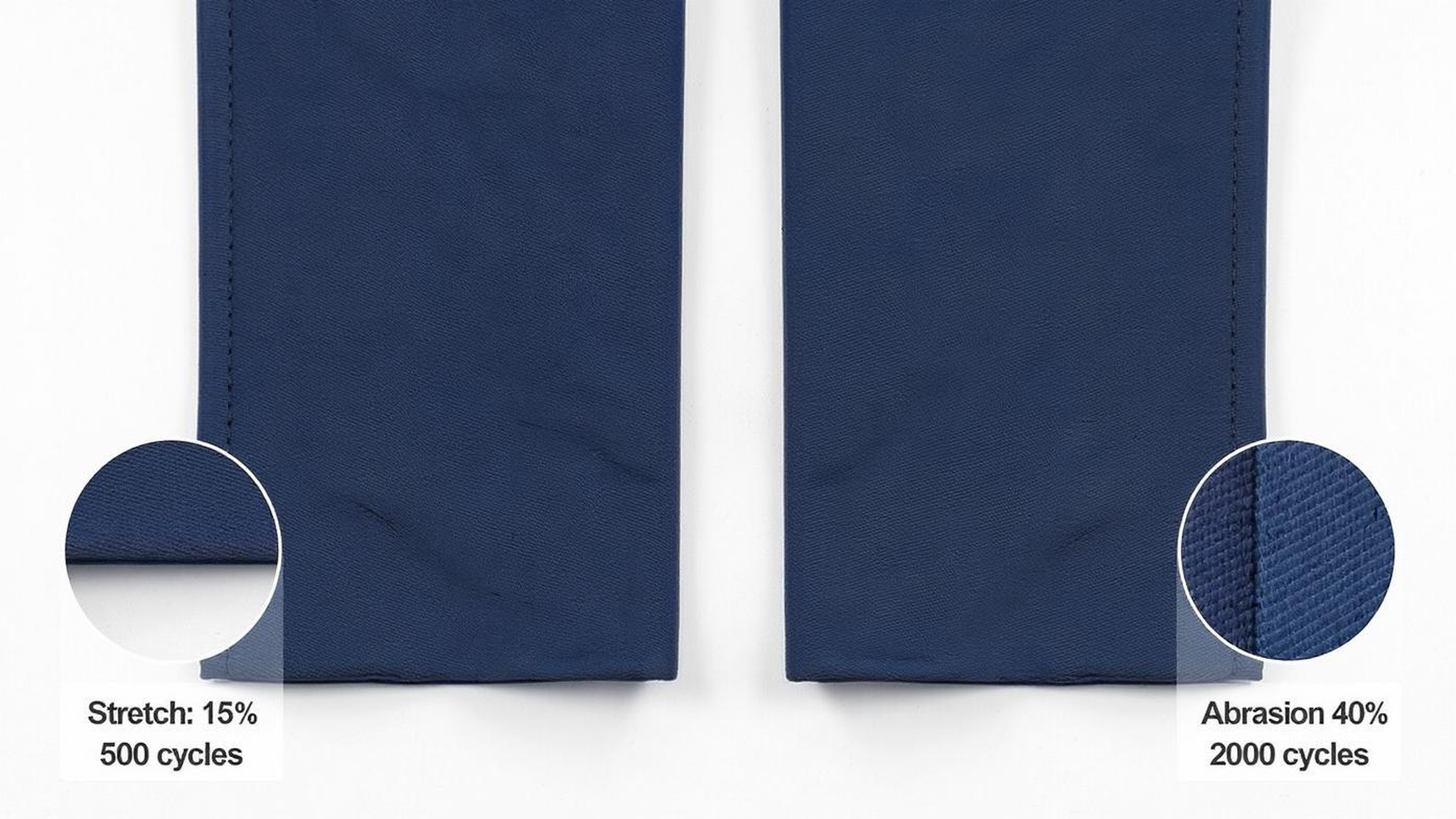
- Stretch test: 100 cycles of stretching to 150% capacity. Must return to 98%+ original length.
- Abrasion test: 5,000 rubs on a Martindale machine. No pilling.
- Wash test: 20 industrial washes. Color must stay consistent.
- Grip adhesion: If it’s a silicone panel, we test it at 40°C — because horses sweat, and so do you.
And we keep samples. Labeled. Dated. In case someone tries to tell us “it’s always been like that.”
It’s not.
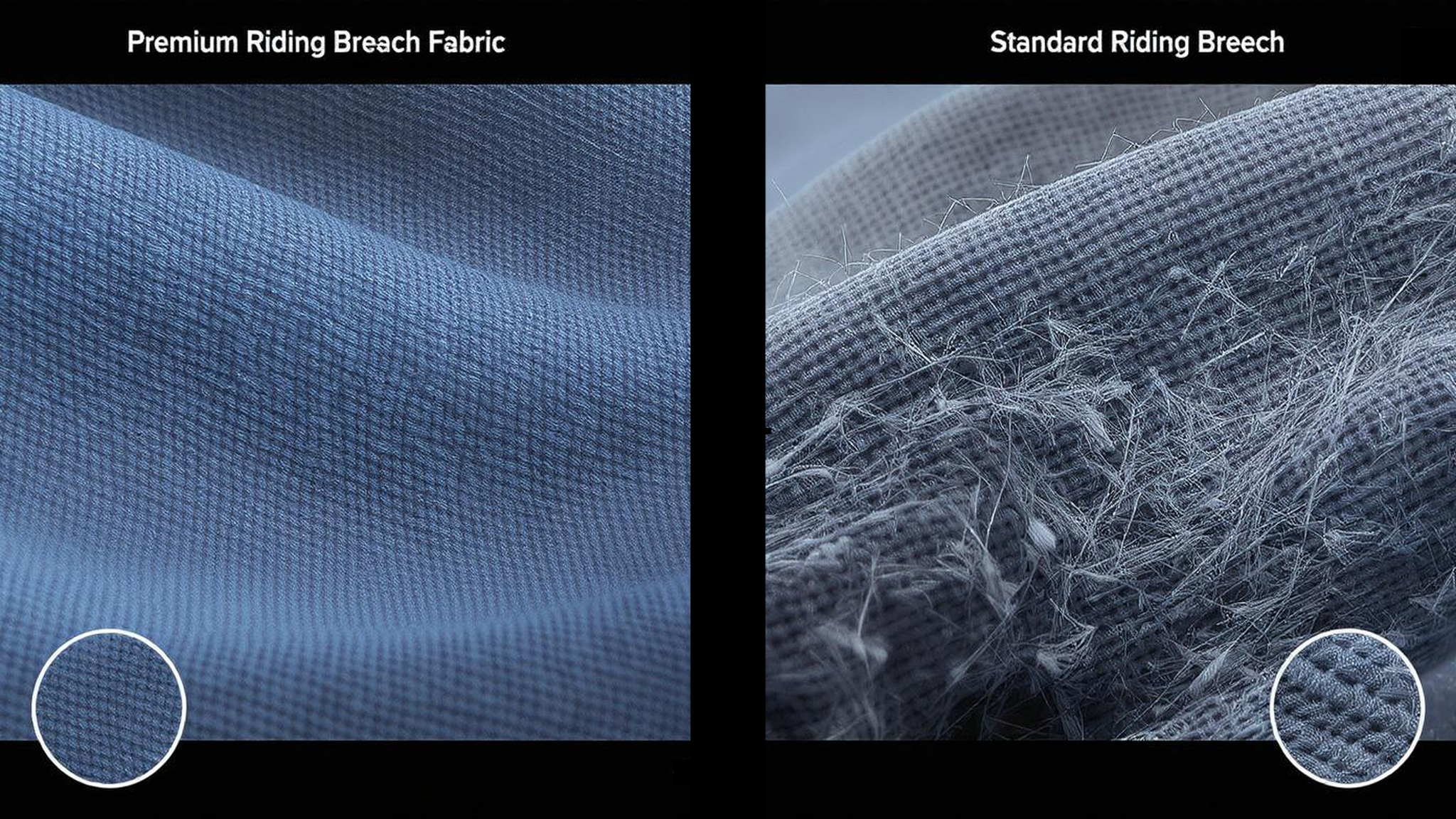
What No One Tells You About “Breathable” Fabric
Let’s talk about marketing bullshit.
“Breathable.” “Moisture-wicking.” “Coolmax.” “Vent-tech.”
Most of it is noise.
Real breathability comes from:
- Knit structure — tight weaves trap heat.
- Fiber content — polyester wicks, but nylon holds moisture.
- Weight — anything over 220gsm is a sauna in July.
We tested 17 fabrics last summer in Florida. Same rider, same workout, same weather.
The “breathable” one from a big brand? Core temp rose 1.8°C in 30 minutes.
Ours? 0.9°C.
Why? We use a honeycomb knit with micro-perforations under the seat and behind the knee. Not because it looks cool — because it works.
And we don’t call it “vent-tech.” We call it “don’t overheat your ass.”
The Sewing Floor Is Where Dreams Go to Die (Or Survive)
You can have the best fabric. The perfect fit. But if the sewing’s bad? You’re done.
I’ve seen breeches fall apart in ten rides. Zippers blown out. Seams splitting at the crotch. Grips peeling like old paint.
And it’s always the same cause: wrong stitch, wrong thread, wrong machine.
The Crotch Seam Debacle
Here’s a fact: The crotch seam is the most stressed part of any breech.
Yet most factories use a standard overlock stitch. Fine for a t-shirt. Disaster for horseback.
We lost a whole batch — 120 pairs — because the contractor used a 3-thread overlock instead of a 5-thread safety stitch with elastomeric thread.

First show season, seams started popping.
We switched to a flatlock + coverstitch combo — stronger, more flexible, lies flatter against the skin.
Cost us 18% more per pair.
Worth every penny.
Now, when we audit a factory (yes, we audit them), we check:
- Stitch type
- SPI (stitches per inch) — we require 12 minimum
- Thread tension
- Seam allowance (must be ⅜” or more in high-stress zones)
And we pull-test every batch.
Grab the crotch. Yank it. If it stretches more than 150%, it’s good. If it snaps? Back to the floor.
Silicone Grip — The “Easy” Part That’s Actually a Nightmare
You’d think applying grip is simple. Print some silicone, cure it, done.
No.
Silicone can:
- Crack in cold weather
- Melt in heat
- Peel off after a few washes
- Feel sticky, not grippy
We used a screen-print method for years. Worked… okay.
Then we switched to digital deposition printing — same tech used in medical adhesives.
![]()
Now, we can control:
- Thickness (0.3mm to 0.6mm)
- Pattern (dots, lines, honeycomb)
- Placement (knee, full seat, half-seat)
- Flexibility (soft for dressage, aggressive for jumping)
And we test it on real saddles — leather, synthetic, worn, new.
Because nothing’s worse than gripping too hard and not being able to slide.
One client said, “I used to fight my breeches. Now they just work.”
That’s the goal.
Quality Control Isn’t a Step — It’s a Religion
Most brands do QC at the end.
That’s too late.
If you’re waiting until the last pair is stitched to check quality, you’ve already lost.
At Fexwear, we do four QC checkpoints:
- Incoming fabric — test every roll
- Cutting — check alignment, grain, pattern match
- In-process — inspect after each major stage (seams, grip, pockets)
- Final inspection — 100% hand-checked
The Time We Caught a Color Shift No One Else Saw
We were making a navy/white color block for a national team.
First 50 pairs looked fine.
Then, during in-process check, our QC lead — Maria — noticed the white panel was slightly bluer.
Like, one shade off. Barely visible.
But she flagged it.
Turns out, the supplier had switched dye lots. Not their fault — but if we’d shipped, the team would’ve had mismatched breeches on the podium.
We stopped production. Re-dyed 200 meters. Lost a week.
But the team wore perfect-matched breeches at the championships.
Maria got a bonus.
Moral: Your QC team should be paranoid. Hire the ones who notice things no one else does.
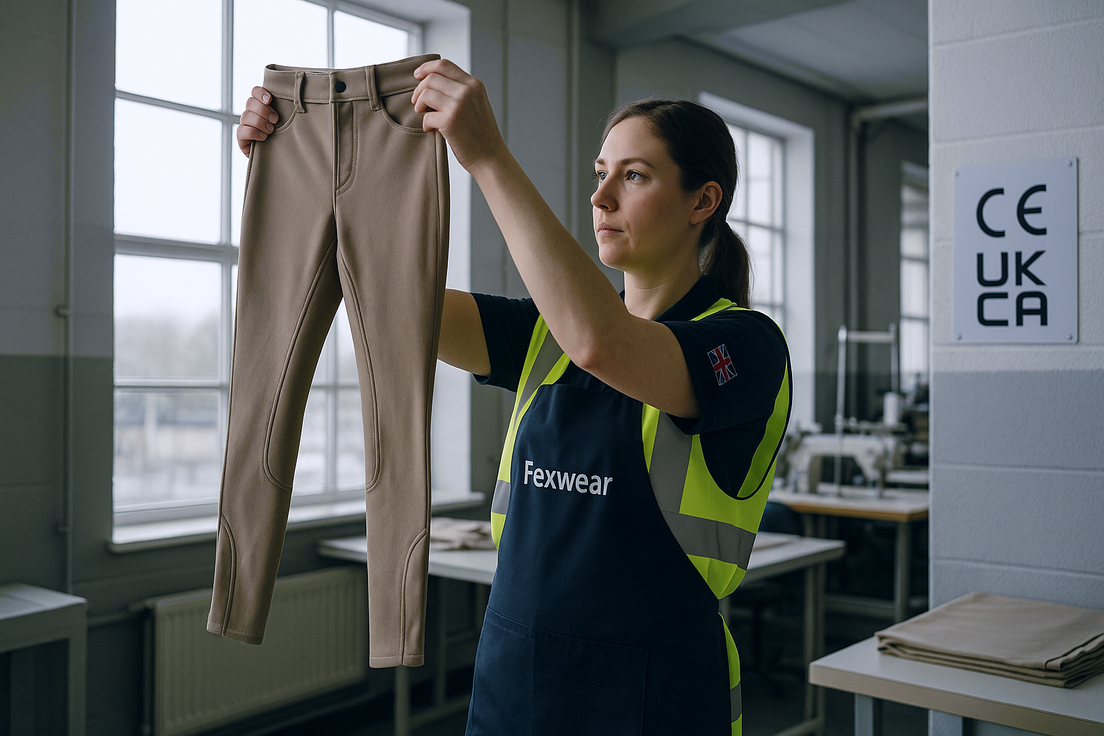
AQL? Sure. But Here’s What We Actually Use
Yeah, we use AQL (Acceptable Quality Level) 2.5.
But that’s just a number.
What matters is what you’re checking for.
Our final checklist:
- Seam integrity (no skipped stitches)
- Stitch count (12+ SPI)
- Grip alignment (±1mm tolerance)
- No loose threads
- Correct labeling
- Color consistency
- No fabric defects
- Fit on mannequin
- Functionality of closures
- Final steam finish
And we do it on every single pair.
Not a sample. Every. One.
Because if one rider gets a defective pair, they’ll tell ten others.
And that’s ten fewer customers.
The Truth About “Sustainable” and “Ethical” Manufacturing
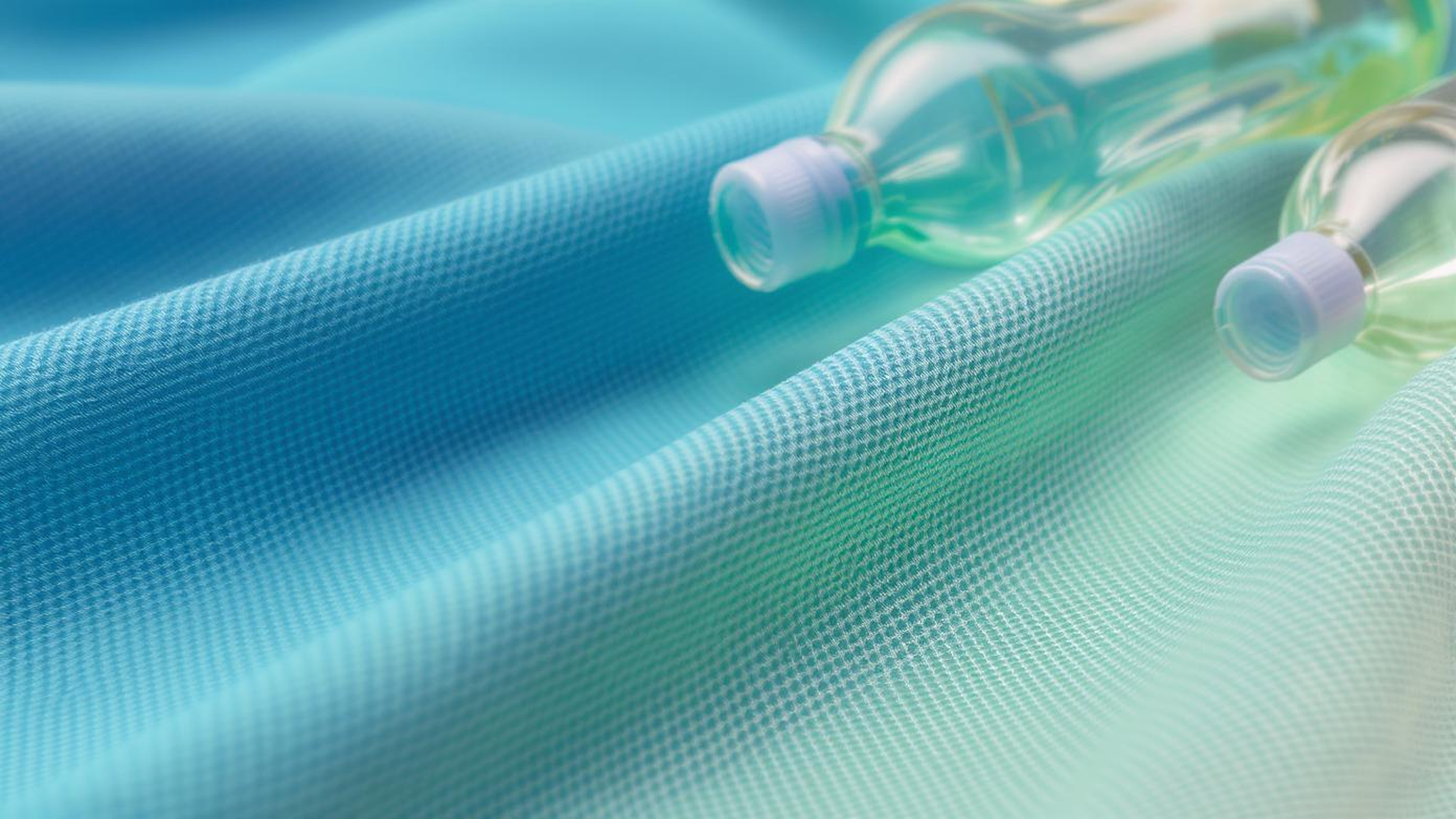
Let’s be real.
“Sustainable” is the new “organic.” Everyone slaps it on the label.
But what does it mean?
At Fexwear, we don’t use it lightly.
We’ve cut waste by 68% in the last five years.
We pay fair wages (verified by third-party audits).
We use recycled fabrics — but only if they perform.
But here’s the thing: Sustainability costs money.
And if you’re selling breeches for $180, you can’t do it right.
Our recycled nylon costs 30% more.
Our ethical factory in Portugal charges 22% above Asian rates.
Our biodegradable packaging? Doubles the cost.
But we do it.
Because riders are starting to ask:
“Who made my clothes?”
“Where did this fabric come from?”
“Will these last, or am I just recycling money?”
We answer:
- Yes, we know the factory manager by name.
- Yes, the fabric is traceable to the mill.
- Yes, these breeches are designed to last 5+ years.
And if you don’t want to pay for that? Fine. Buy fast fashion.
But don’t call it sustainable.
So What Actually Works? (The Real Answer)
After 12 years, hundreds of clients, and more mistakes than I care to admit — here’s what I’ve learned:
- Custom means fit, not color. If it doesn’t move with your body, it’s not custom.
- Fabric is everything. Test it like your career depends on it — because for some riders, it does.
- Stitching is invisible — until it fails. Invest in the right seams.
- QC isn’t a department. It’s a mindset. Everyone on the floor should care.
- Sustainability without performance is pointless. Riders need gear that works first.
- And finally: trust your gut. If a deal feels too good to be true? It is.
We’ve turned down clients who wanted “custom” breeches for $90 a pair.
Because I know what that means:
- Thin fabric
- Bad stitching
- No real fit testing
- A product that’ll fall apart in six months
And I won’t put my name on that.
Final Note (Like a Voice Memo)
Look, I’m tired. I’ve been doing this long enough to know that perfection doesn’t exist.
But better? That’s possible.
Better fit. Better fabric. Better honesty.
If you’re a rider, I want you to stop settling.
If you’re a brand, I want you to stop cutting corners.
At Fexwear, we’re not the cheapest. We’re not the flashiest.
But we’re the ones who’ll tell you when your design won’t work.
Who’ll re-cut fabric because the dye lot shifted.
Who’ll stay up late to fix a seam issue before shipping.
Because this isn’t just clothing.
It’s what stands between you and the saddle.
It’s what lets you focus on the ride — not the itch, the pinch, the fear that your breeches will fail.
So if you’re ready to make something that actually works?
Hit reply. Let’s talk.
No fluff. No jargon. Just real talk.
FAQs
Q: How long does it take to make custom breeches?
A: 4–6 weeks. Less if it’s urgent. More if we’re doing 3D scans and multiple samples. Rush jobs cost more — and usually end in regret.
Q: Can I return custom breeches?
A: Not if we made them to your specs. But if there’s a defect? We’ll fix it. Fast.
Q: Why are your breeches more expensive than [Brand X]?
A: Because we’re not using gym leggings fabric, overseas factories with no QC, or fake “custom” options. You’re paying for real fit, real testing, real durability.
Q: Do you work with small brands or just individuals?
A: Both. We’ve done 20 pairs for a local academy and 500 for a national team. MOQ is 20.
Q: Can you match a specific color?
A: Yes — but only if the fabric exists. We’ll send a physical swatch. Screens lie.
Call for Feedback
Ever had a pair of breeches fall apart? Or a “custom” order that missed the mark?
Hit reply and tell me your story.
I read every message. And if it’s a problem we can fix? We will.

